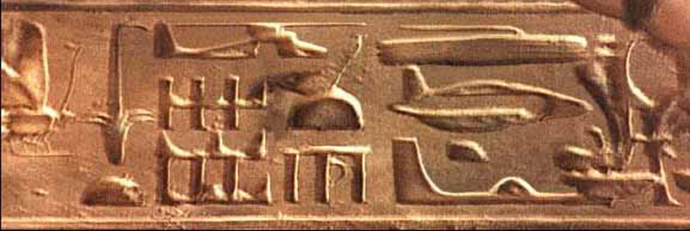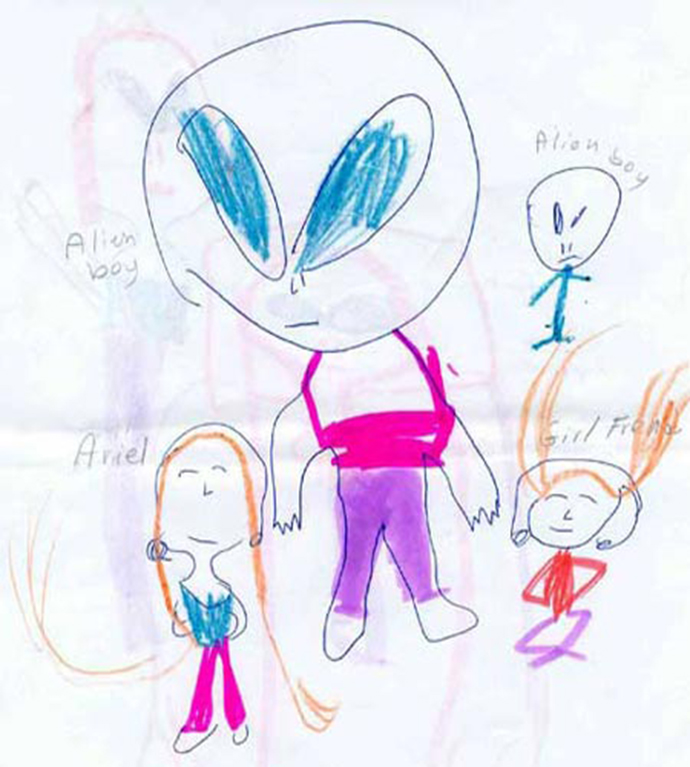from pastelegram.org, June 2011 – April 2014
Perception Problems
When you listen to someone speak, how do you tell when one word ends and the next begins? You might imagine that the sound waves’ acoustic properties help you figure this out, but you’d be wrong. There is no direct connection between acoustic and lexical segmentation of spoken language:
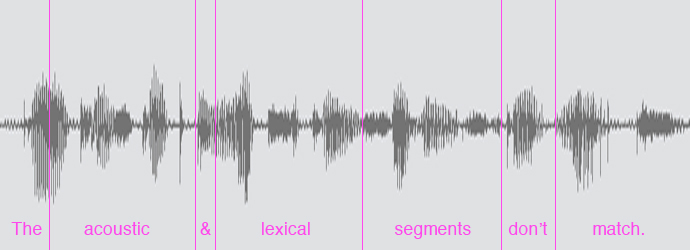
Image by Sam Sanford.
Perhaps this is not surprising. More surprising may be the extent to which visual boundary-discrimination is culturally conditioned: consider, for example, the Aztecs, who, seeing Spanish horsemen for the first time, "sawe not the Horsemanne, with feare of whome they fledde, thinking that he hadde bin a Centaure, and that the Horse and man was all one incorporate."1">http://ia700806.us.archive.org/1/items/pleasanthistorie00lpez/pleasanthi...
If it’s true that an Aztec five hundred years ago, having no categories of “horse” and “riding a horse” could not perceive the boundary between horse and man, how shall we interpret the words and pictures of far more ancient people living in cultural worlds vastly more different from our own? For example, what exactly does this passage from the Bible describe—
Now Mount Sinai was wrapped in smoke, because YHVH had descended upon it in fire; the smoke went up like the smoke of a kiln, while the whole mountain shook violently. As the blast of the trumpet grew louder and louder, Moses would speak and God would answer him in thunder. (Exodus 19:18-19)

Gerard Hoet, Illustration from the Figures de la Bible, 1728; published by P. de Hondt in The Hague; image from http://commons.wikimedia.org/wiki/File:Figures_The_Promulgation_of_the_L..., courtesy Bizzell Bible Collection, University of Oklahoma Libraries
—and what was Ezekiel looking at in his strangely detailed description:
I looked, and there were four wheels beside the cherubim, one beside each cherub; and the appearance of the wheels was like a gleaming beryl. And as for their appearance, the four looked alike, something like a wheel within a wheel. When they moved, they moved in any of the four directions without veering as they moved; but in whatever direction the front wheel faced, the others followed without veering as they moved. Their entire body, their rims, their spokes, their wings, and the wheels...were full of eyes all around. (Ezekiel 10:9-12)

Hans Holbein der Jüngere, Woodcut from the Zurich Bible; image from http://commons.wikimedia.org/wiki/File:Ezekiel%27s_vision_Zurich_Bible.jpg.
From our contemporary standpoint, immersed in our scientific cosmology and educated within the ubiquity of pictures made possible by mechanical reproduction, it is impossible fully to imagine how to interpret such descriptions as these. Going back further in time, we might wonder what ‘prehistoric’ people saw when they looked at the petroglyphs and cave-paintings they left behind: was their simple-seeming depiction of a deer or bison as ‘realistic’ to them as a photograph is to us today? And what are images like the Wandjina paintings of the Kimberley area in Australia meant to depict?
Are these Egyptian glyphs pictures of helicopters and airplanes?
The “ancient astronauts” hypothesis2 rests largely on the interpretation of ancient pictures from within our own culturally-conditioned way of seeing, a dubious enterprise. It is a mistake to assume that an observer three thousand years in the past would perceive and represent flying machines and space helmets in ways that would be comprehensible in those terms to us today.
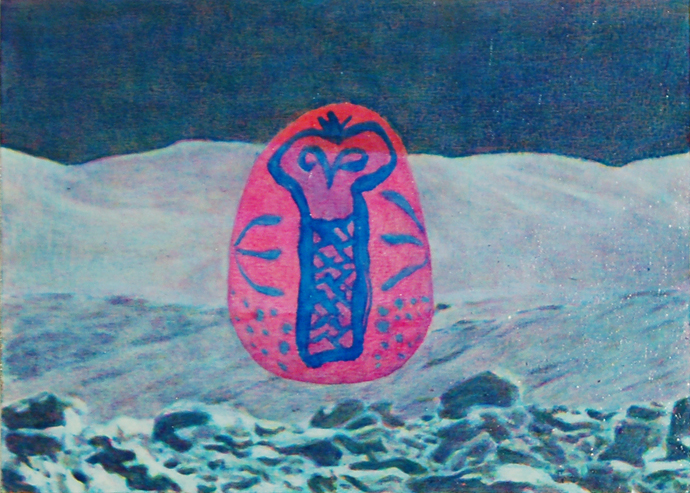
Sam Sanford, A Funny Thing, 2010; oil on paper, 5” x 7”; image courtesy the artist.

Sam Sanford, untitled, 2010, digital collage; image courtesy the artist.
We might also wonder what our contemporary “centaurs” are: which of our perceptions will seem ridiculously mistaken to people in the future? What would you actually perceive if you faced an extraterrestrial being, for example—one whose technology and physiological morphology were wildly beyond the bounds of your learned categories? Would you be able to perceive the boundaries between the visitor and his clothing, tools and ship? Would such boundaries even be meaningful distinctions to make?
The 1989 depictions of the mysterious “visitors” who repeatedly abducted Communion author Whitley Strieber are based closely on his repeated recollections under hypnosis:
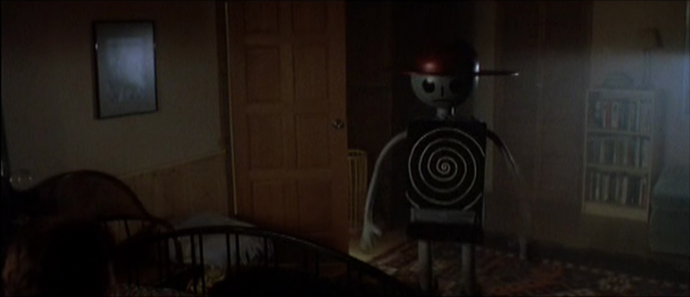
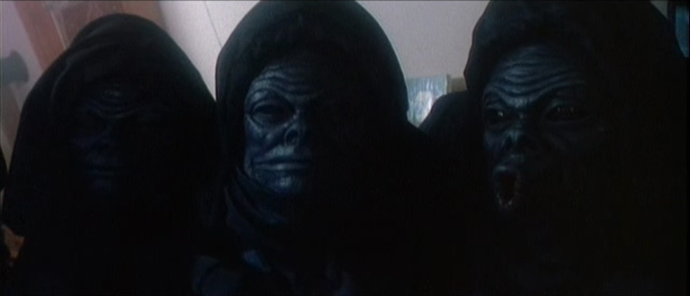
Still from Communion, 1989.
The blue-faced creatures were described by Strieber’s young son as “a bunch of little doctors;” an indication of his brain’s struggle to find a linguistic category with which to interpret his perceptual experience.
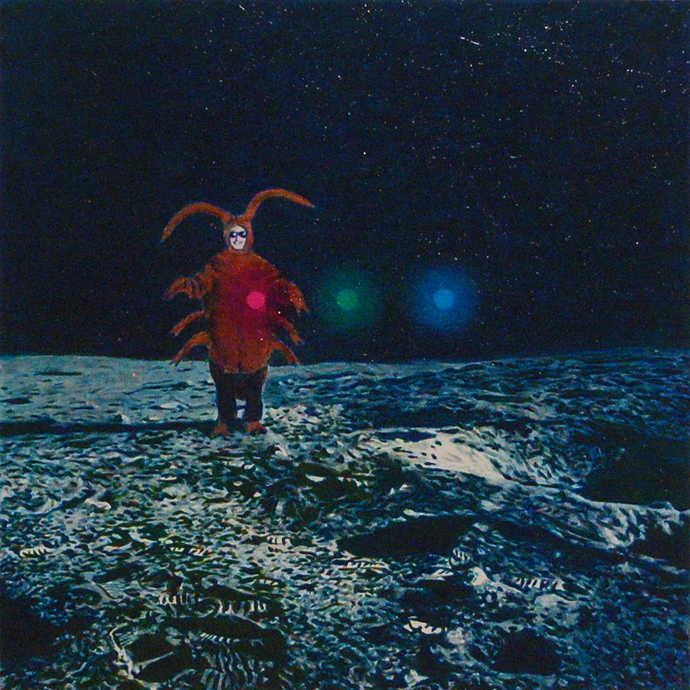
What are we to make of the striking similarities among descriptions by “abductees” of their mysterious abductors? The visage of the creatures known as “grays” is so familiar that it is easy to argue that the image’s ubiquity is why so many abductees perceive it: the image has become a perceptual category into which the experience of abductees is readily shunted, creating a chicken-and-egg situation. Where did this image come from, and why do so many people believe they have seen these creatures with their own eyes?
Science, as a way of gaining knowledge about the world, is by its nature hamstrung when it comes to knowledge of things that don’t lend themselves easily to reproducible observation and measurement. Incredibly rare things, things that for some reason baffle our perceptual apparatus—like time-travelers or alien technologies might be supposed to do—and things that fall far outside our consensual categories are not susceptible to scientific inquiry. Thus, black holes are widely accepted as real, even though they defy direct observation, because their existence is inferred logically from a bunch of other observations and they fit neatly into a mathematically coherent and beautiful model. Yet the UFO phenomena, which have been closely and directly observed by thousands of people, including many military personnel, pilots, police and other “reputable” observers, often with radar corroboration of visual observation,3 are not widely accepted as “real” (meaning something truly unexplained by consensus ontology), because they are rare and cannot be observed at will. The ubiquity of image-capture devices cuts both ways here: many argue that if such phenomena were “real,” their images would have been captured in an indisputable manner by now. Yet, as the overwhelming flood of UFO videos on the Internet indicates, such images are so easily faked that any real footage would be difficult to pick out. And video documentation does in fact exist of some of the most widely-observed UFO events, such as the “Phoenix lights” of 1997—an event that has never been explained away and that thousands of people (including the governor of Arizona) observed—yet this documentation has failed to spark widespread scientific interest in UFO phenomena.
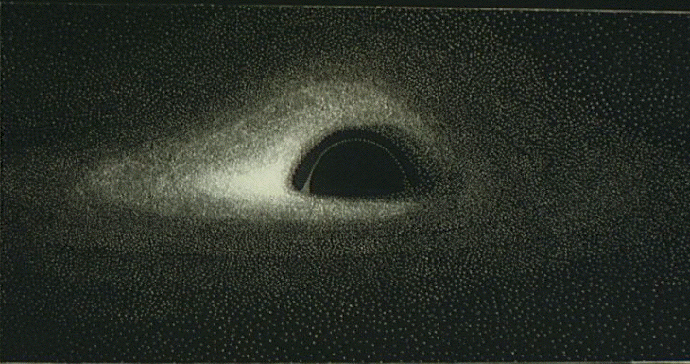
The comforting idea that our perceptual apparatus provides an unmediated or objective experience of external reality has been exploded by scientific research into perception and cognition. Properties that seem inherent to a real external world, such as color, the boundaries between discrete objects, the continuity of the visual field, even the linear passage of time: these are simply convenient interpretive fictions crafted by our brain. Our perceptual system evolved not to show us the “truth” about whatever really exists outside of the brain, but to help us navigate the environment, locate food and mates, avoid predators, etc. Numerous experiments have illuminated the interpretive nature of perception;4 here is a simple one you can perform on yourself to demonstrate the rather large blind spots in your visual field that your brain normally conveniently fails to alert you to:
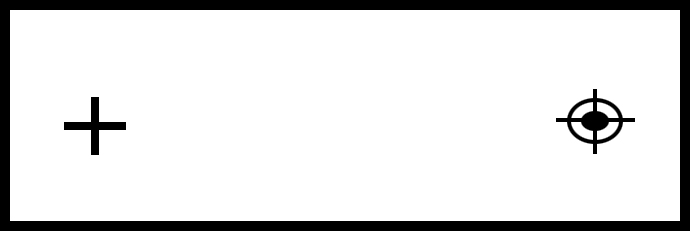
Close your left eye. Focus on the cross with your right eye and move your head closer to or farther away from the screen until the target shape disappears.
The experiment shown in this video demonstrates the startling extent to which our perceptual system can deceive us:
- 1. Francisco López de Gómara, trans. Thomas Nichols, The Pleasant Historie of the Conquest of the West India, Now Called New Spaine, 1596. [2. The hypothesis that Earth has been repeatedly visited by interstellar travellers since ancient times, and that these visitations gave rise to the various religious traditions; see for example Erich von Däniken, trans. Michael Heron, Chariots of the Gods (New York: Berkeley Books, 1999).
- 3. The Disclosure Project (disclosureproject.org) has archived testimony from hundreds of witnesses; see also Nick Pope’s website (nickpope.net), especially his description of the Rendlesham Forest incident.
- 4. Daniel Dennett’s Consciousness Explained (1991) discusses many of the most remarkable of these experiments and their philosophical implications; for a technical explication of visual perception see Brian A Wandell, Foundations of Vision (United States: Sinauer Associates Inc., 1995).


